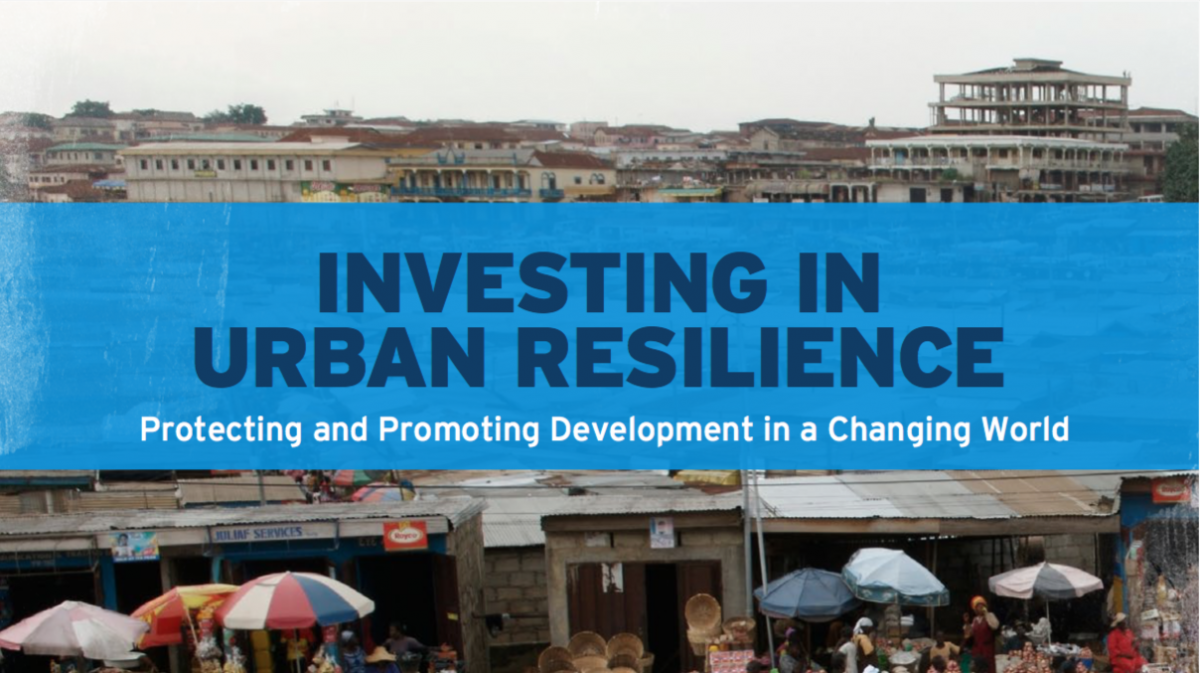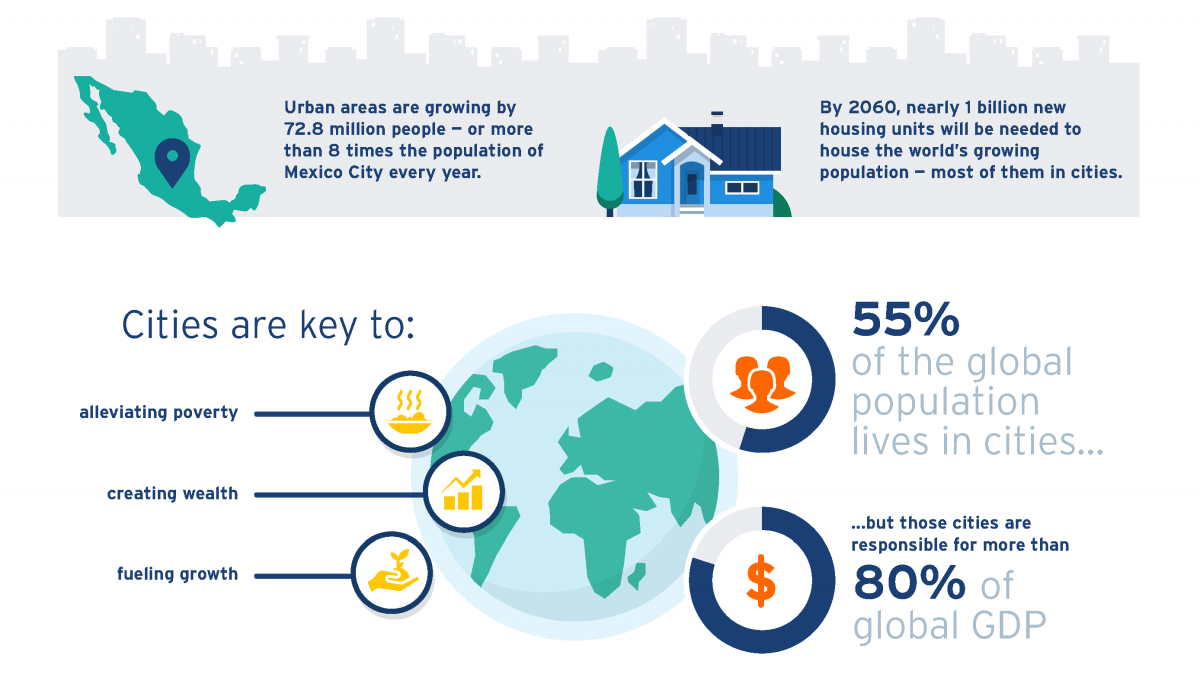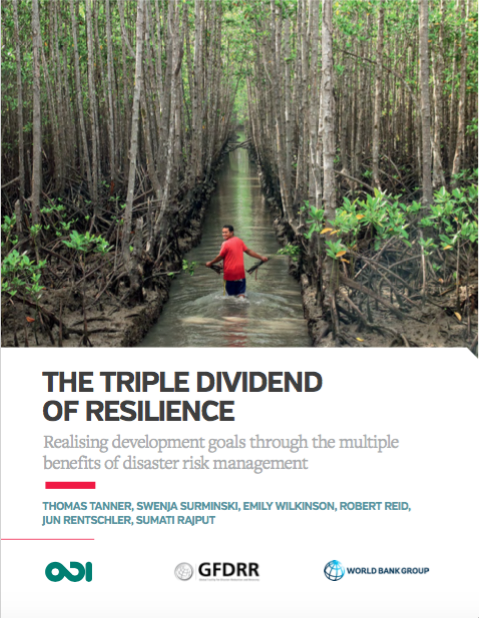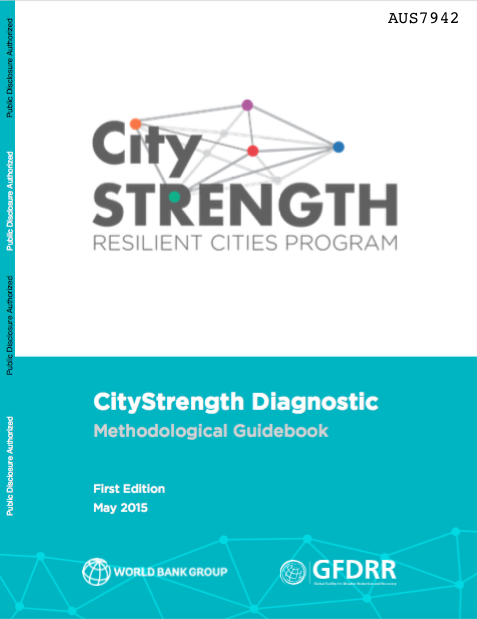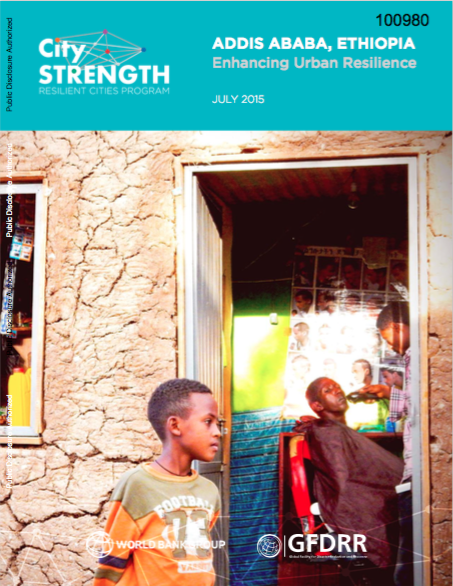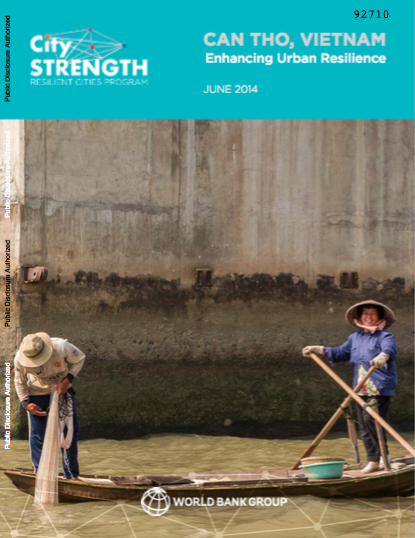Investing in Urban Resilience:
The Report
The Report
By 2030, without significant investment to improve the resilience
of cities around the world, climate change may push up to
77 million urban residents into poverty.
Those are the findings of Investing in Urban Resilience:
Protecting and Promoting Development in a Changing World,
Protecting and Promoting Development in a Changing World,
a new report by the World Bank and the
Global Facility for Disaster Reduction and Recovery (GFDRR),
Global Facility for Disaster Reduction and Recovery (GFDRR),
released in advance of the United Nations Conference
on Housing and Sustainable Urban Development (or Habitat III).
on Housing and Sustainable Urban Development (or Habitat III).
The report highlights the need for investment in resilience, how cities can
take action to build resilience, how the World Bank can help –
and how, by investing together, we can protect hard-won development gains,
and create a safer, more prosperous future.
take action to build resilience, how the World Bank can help –
and how, by investing together, we can protect hard-won development gains,
and create a safer, more prosperous future.
...or watch the video below.
The Launch Event
At the United Nations Conference on Housing and Sustainable Urban Development
(Habitat III), taking place in Quito, Ecuador, from 17 to 20 October 2016,
co-authors the World Bank and GFDRR will host an event to globally launch
Investing in Urban Resilience: Protecting and Promoting Development in a Changing World.
(Habitat III), taking place in Quito, Ecuador, from 17 to 20 October 2016,
co-authors the World Bank and GFDRR will host an event to globally launch
Investing in Urban Resilience: Protecting and Promoting Development in a Changing World.
1:00 - 1:45 p.m.
October 20, 2016
Urban Library
Casa de la Cultura Ecuatoriana "Benjamin Carrion"
Quito, Ecuador
Our Partners
GFDRR is a key member of the Medellín Collaboration on Urban Resilience, a collective that works together to strengthen the resilience of all cities and human settlements around the world. Together, its members work in over 2,000 cities globally and commit more than $2 billion annually toward advancing resilient urban development. Along with GFDRR, the members of the Medellín Collaboration are:
|
• 100 Resilient Cities (pioneered by the Rockefeller Foundation)
|
Find Out More
The Triple Dividend of Resilience
It is clear that investing in disaster risk management and resilience can prevent human and economic losses during a disaster – but these investments can also actively contribute to wealth, wellbeing, profit, growth and sustainable development. In fact, disaster risk management investments can yield three types of benefits – or dividends of resilience:
|
1) Saving lives and avoiding losses when disasters strike;
2) Unlocking economic potential; and
3) Generating development co-benefits, or uses, of a specific investment.
|
Learn more by exploring the report below.
CityStrength Diagnostic
The World Bank and GFDRR pioneered the innovative CityStrength Diagnostic,
a rapid evaluation that helps urban stakeholders better understand risk
and determine how well their urban systems are performing.
The diagnostic identifies critical gaps or weaknesses, and recommends key actions
and investments that will boost resilience and unlock opportunity.
a rapid evaluation that helps urban stakeholders better understand risk
and determine how well their urban systems are performing.
The diagnostic identifies critical gaps or weaknesses, and recommends key actions
and investments that will boost resilience and unlock opportunity.
Learn more by exploring the documents and links below.
Disaster Risk Financing
Natural disasters generate significant fiscal risk and create major budget volatility.
Even countries with robust disaster risk management programs
can still be highly exposed to the economic and fiscal shocks caused by major disasters.
Disaster risk financing can help countries ensure that their populations are financially protected in the event of a disaster.
Even countries with robust disaster risk management programs
can still be highly exposed to the economic and fiscal shocks caused by major disasters.
Disaster risk financing can help countries ensure that their populations are financially protected in the event of a disaster.
Learn more by visiting the Disaster Risk Financing and Insurance Program webpage:
read about disk risk financing, explore case studies, and discover how financial preparedness is a key part of resilience.
read about disk risk financing, explore case studies, and discover how financial preparedness is a key part of resilience.

